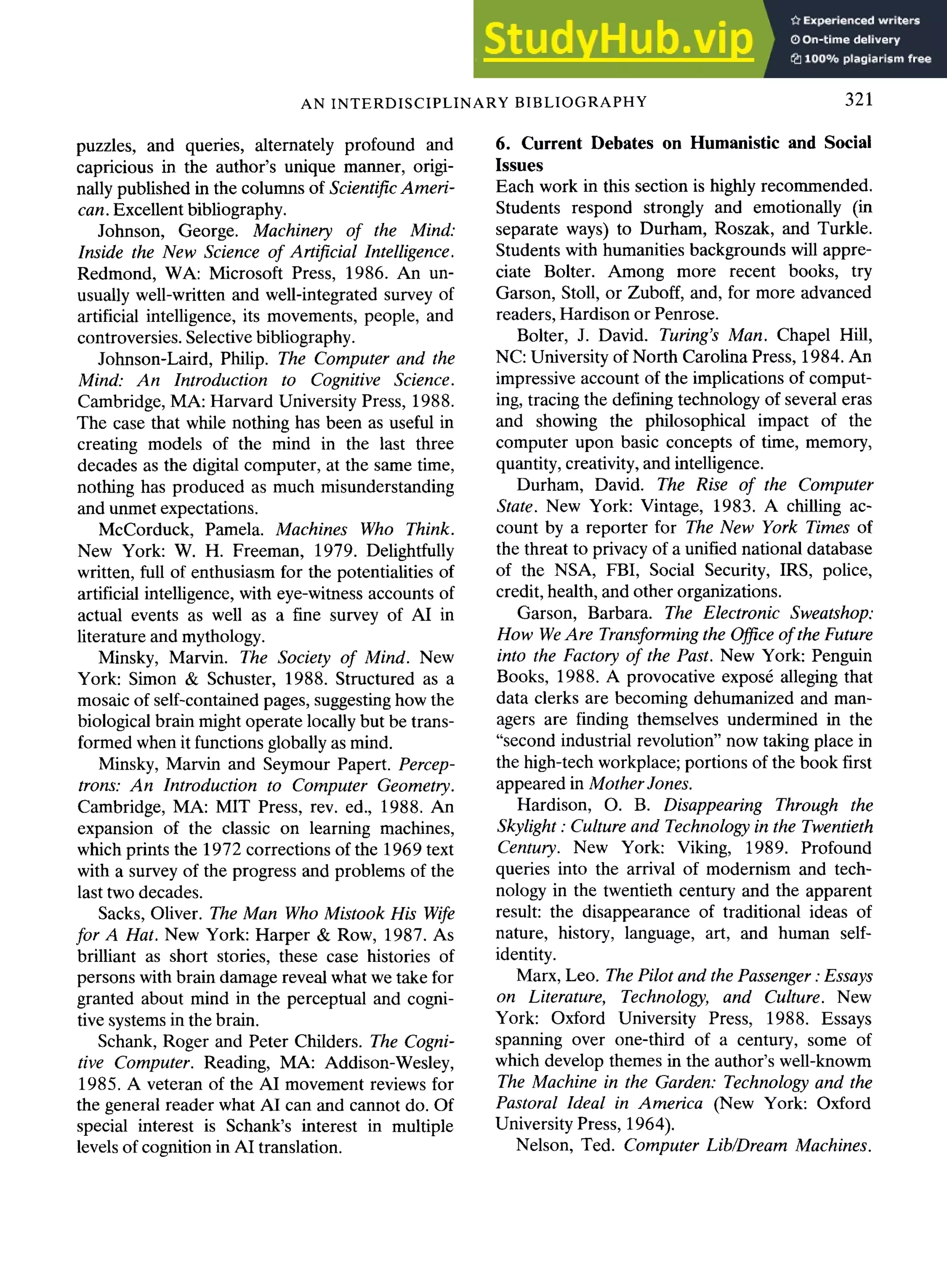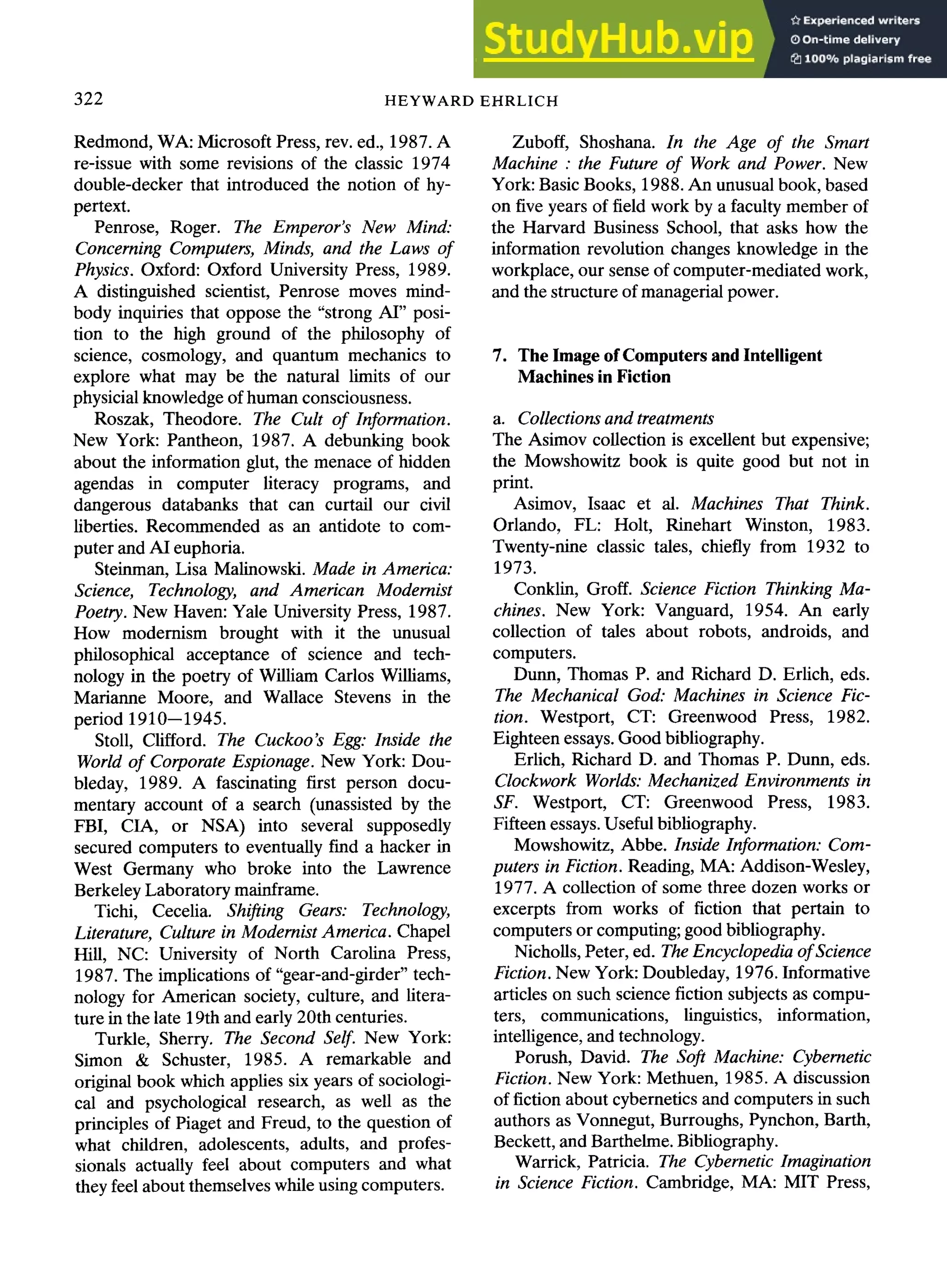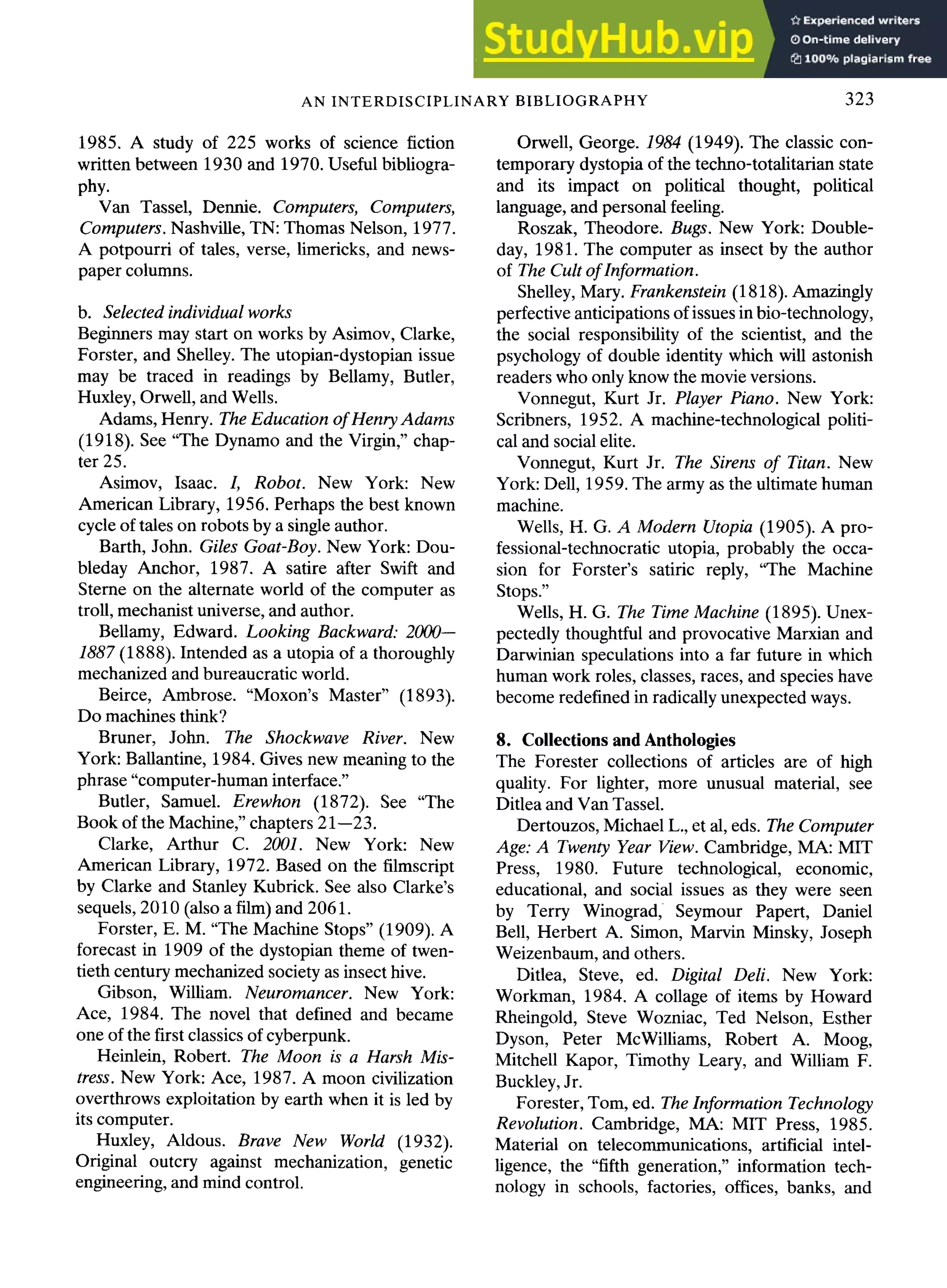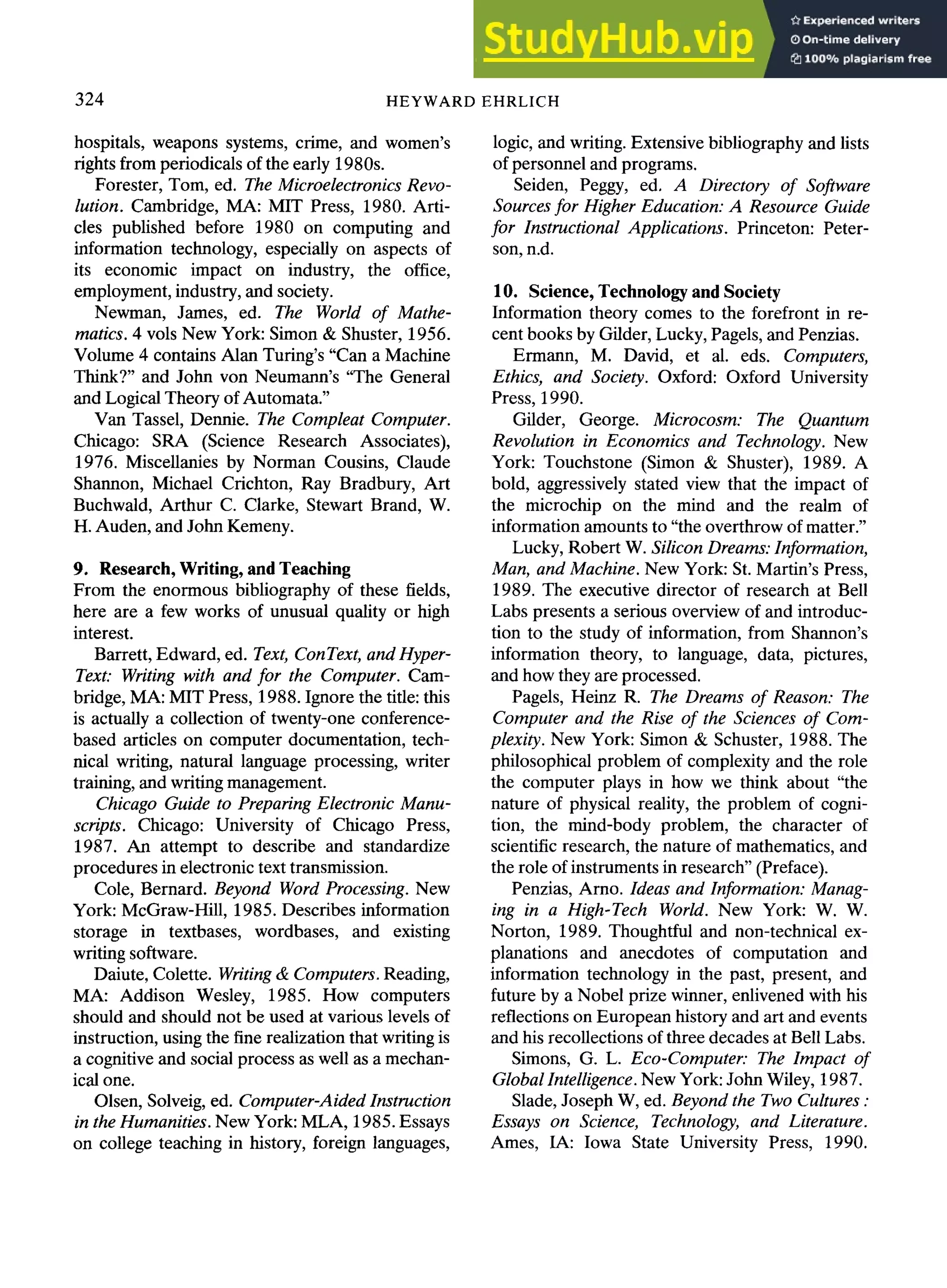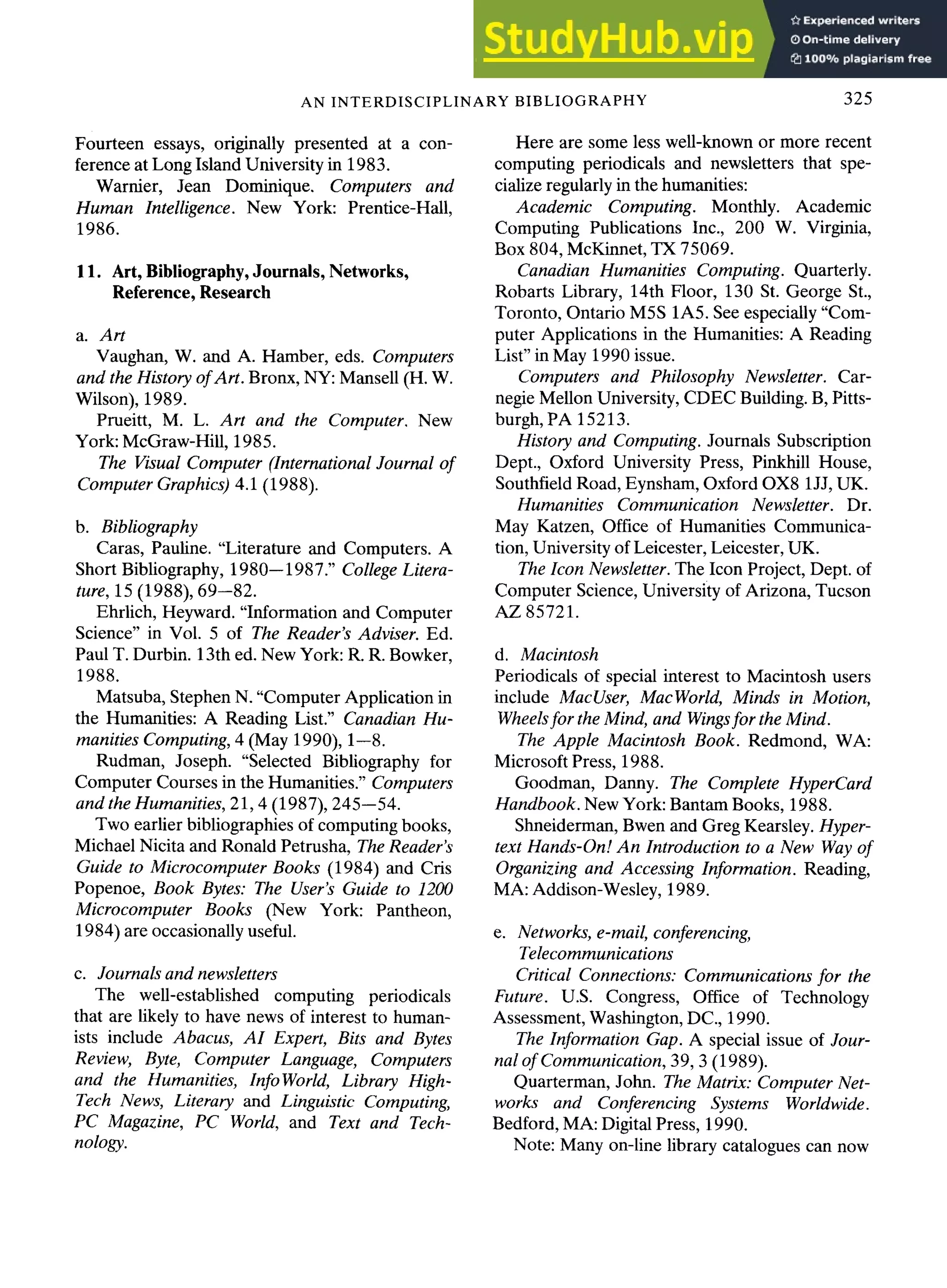This document provides an interdisciplinary bibliography for computers and the humanities courses. It begins with an introduction describing the author's approach to teaching such courses and some key considerations. The main body consists of annotated bibliographies grouped into 11 sections on various topics relevant to computers and the humanities, such as overviews, introductions, human languages, literary analysis, artificial intelligence, debates on social issues, and more. The annotations evaluate and describe the books to suggest course materials and readings. The bibliography aims to support interdisciplinary study at the intersection of computing and the humanities.
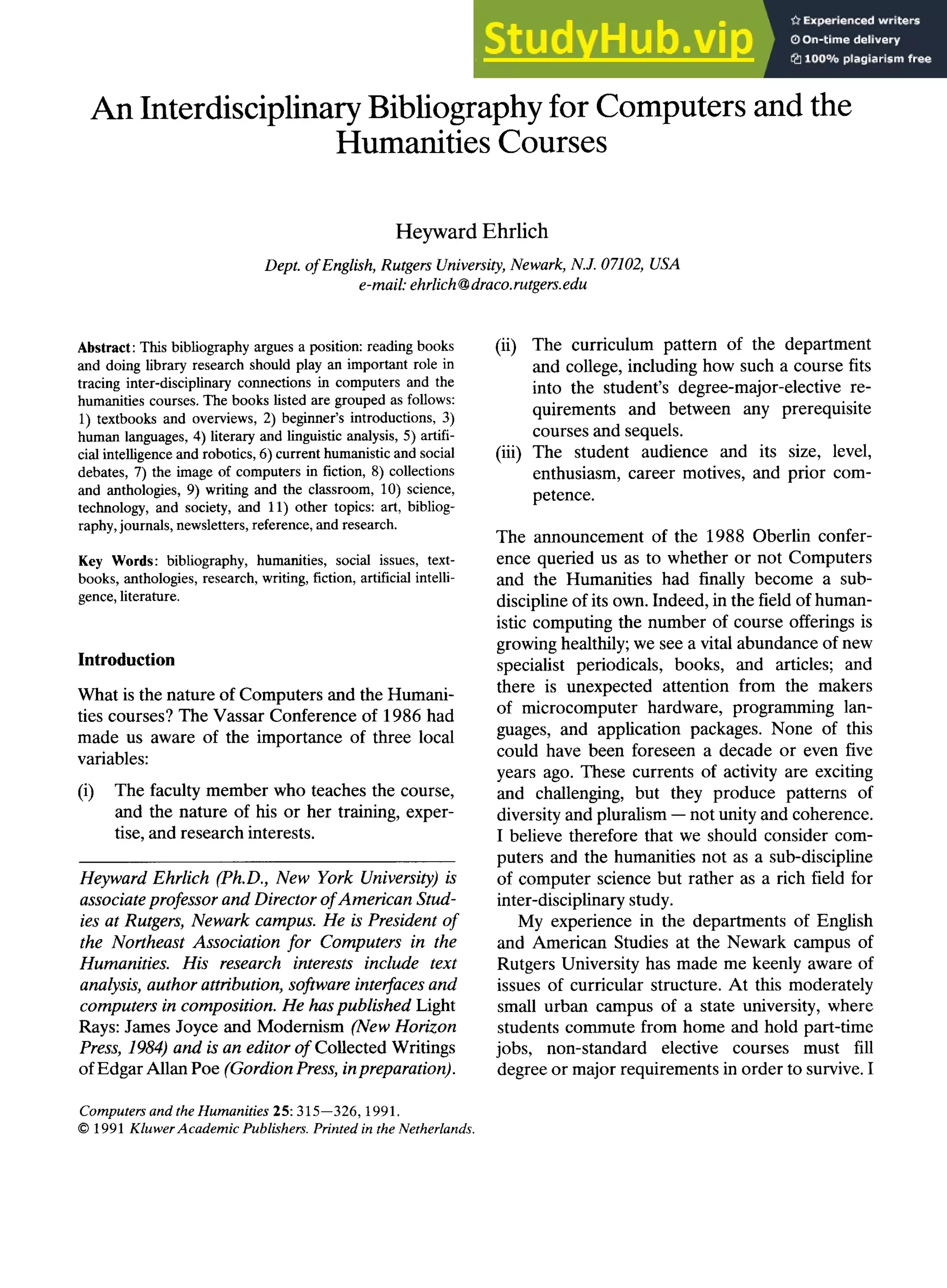
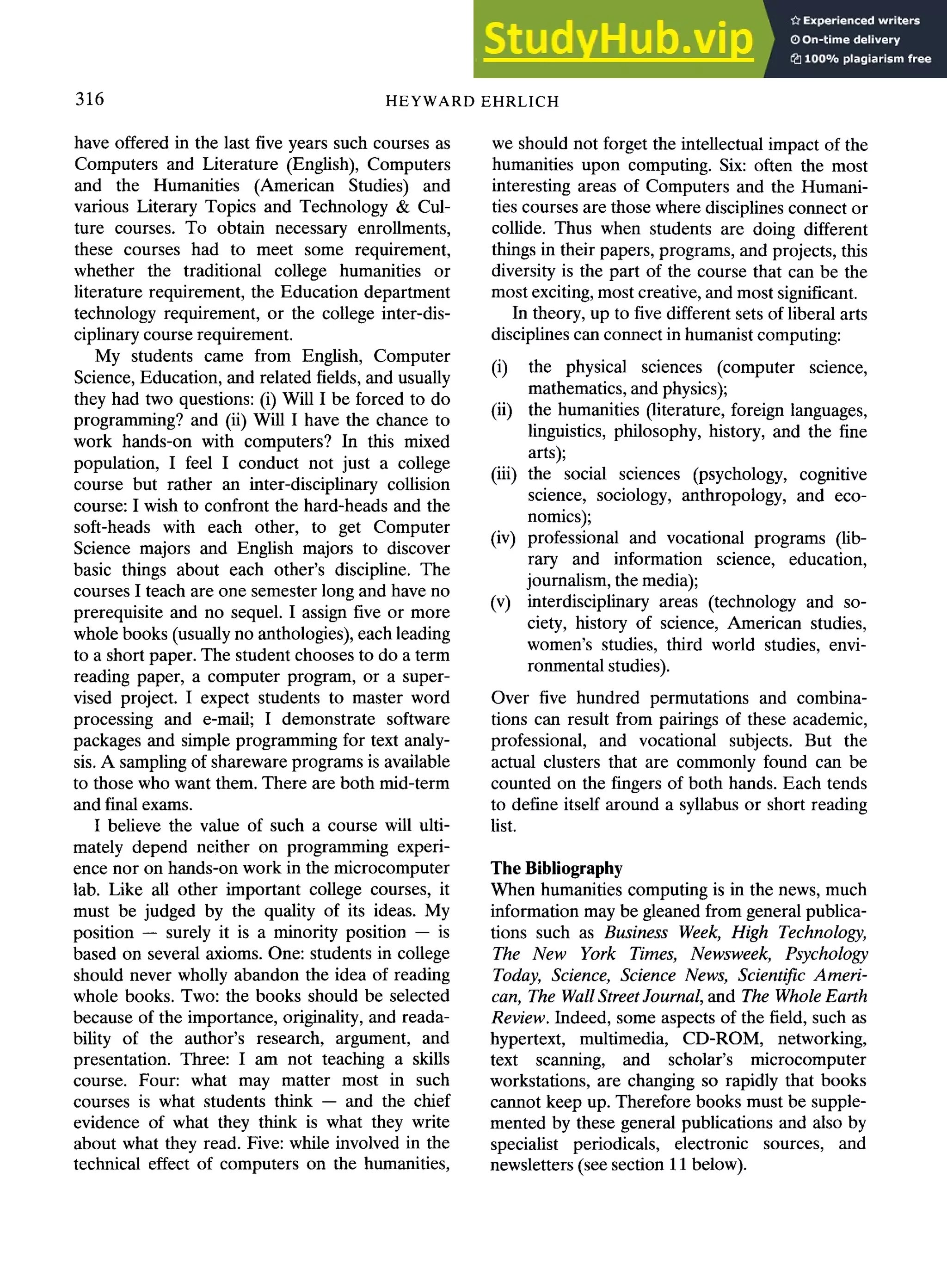
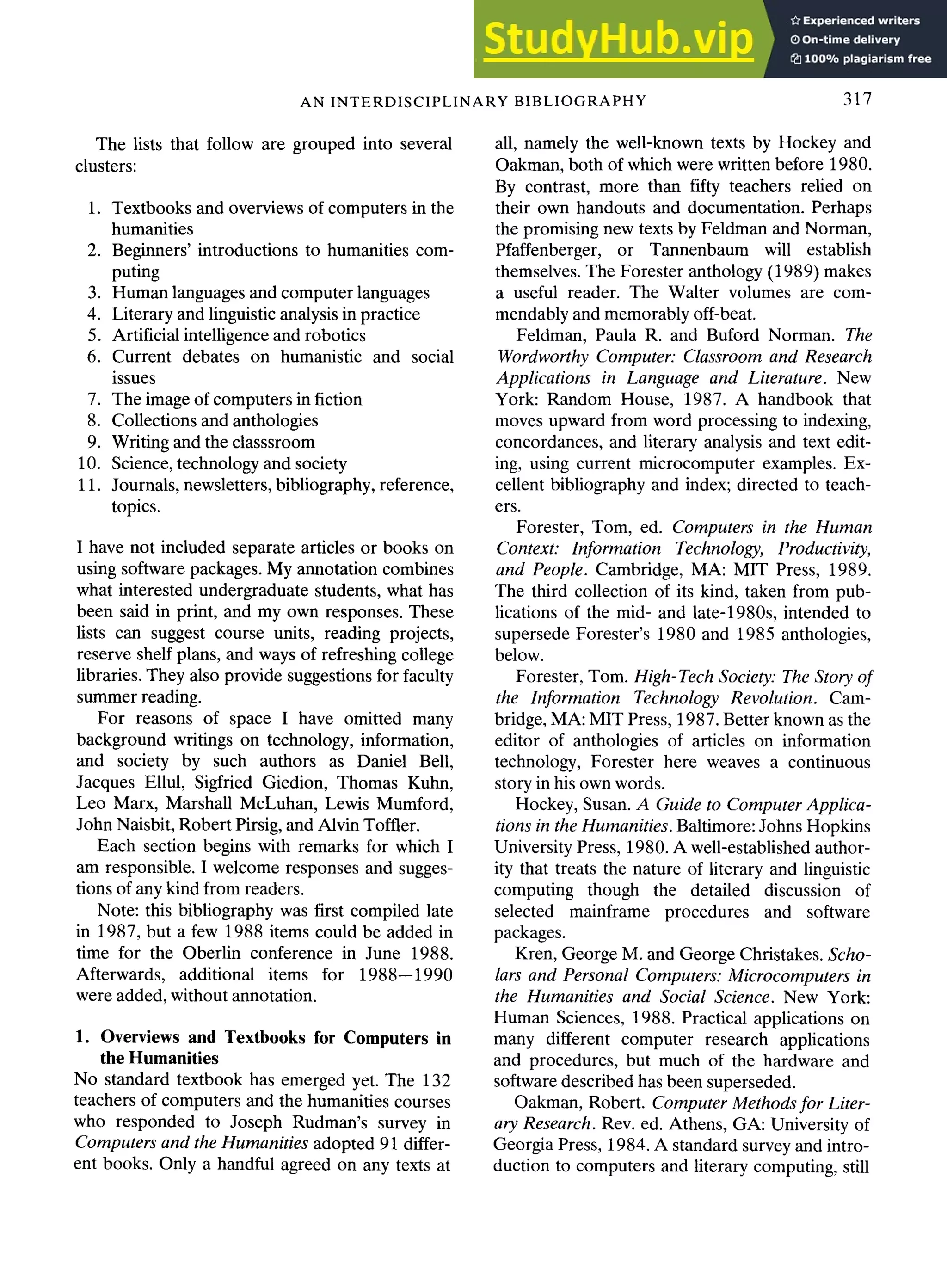

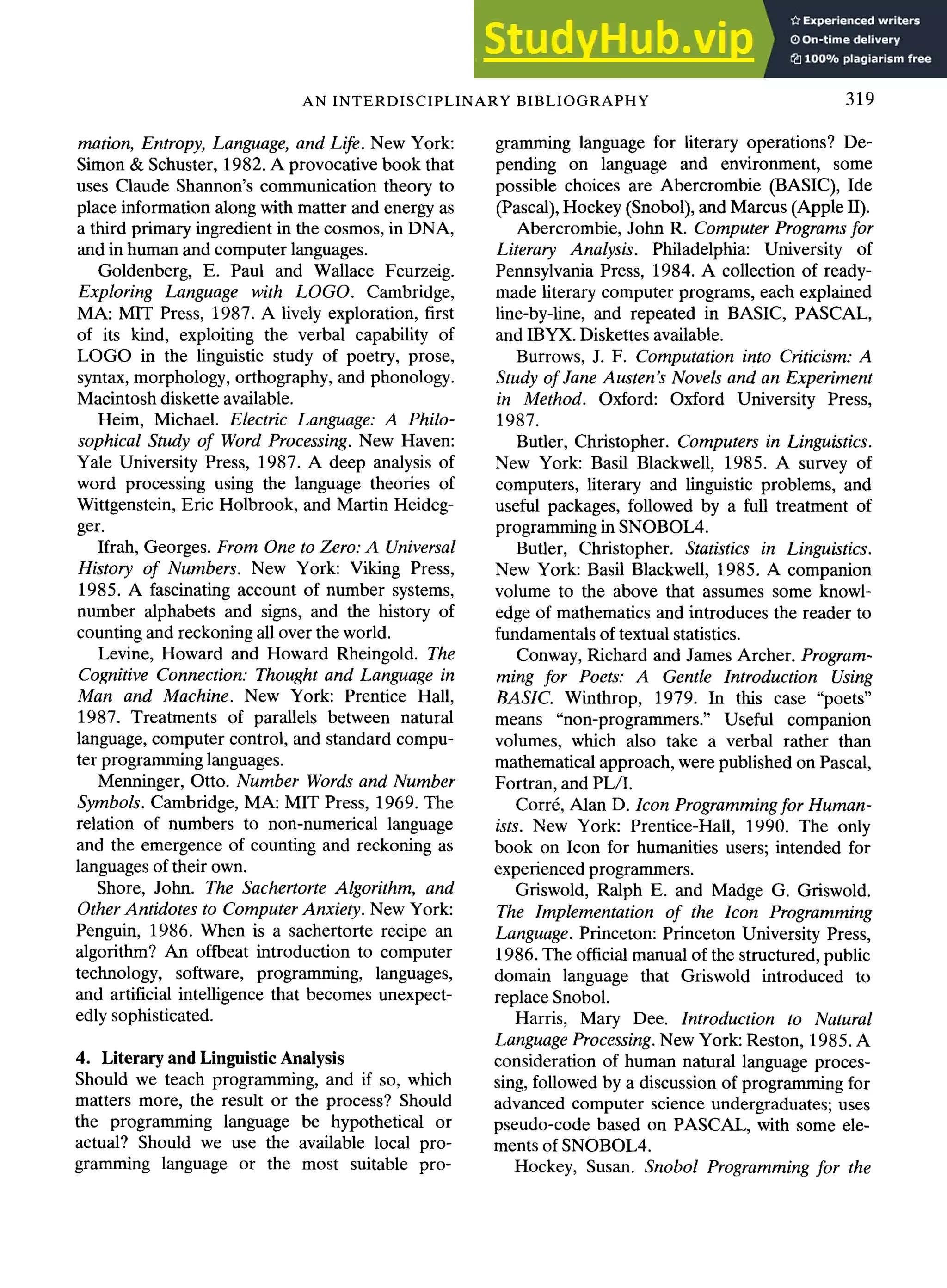
![320 HEYWARD EHRLICH
Humanities. Oxford: Oxford University Press,
1985. An introduction to SNOBOL4 as a literary
and linguistic programming language that assumes
no prior knowledge of computing or mathematics.
Ide, Nancy. Pascal for the Humanities. Phila-
delphia: University of Pennsylvania Press, 1987.
Systematic explanations of the problems in literary
and textual analysis, taking the student step-by-
step through programs of graduated difficulty in
standard PASCAL.
Marcus, Jeffrey and Marvin Marcus. Comput-
ing without Mathematics: BASIC [and] Pascal
Applications. New York: Computer Science Press,
1986. An introduction to programming in BASIC
and Pascal for undergraduate humanities and
social science students using the Apple II; pro-
grams published on diskette.
Nagao, Makoto. Machine Translation:How Far
Can It Go? Trans. Norman D. Cook. Oxford:
Oxford University Press, 1989.
Potter, Rosanne G., ed. Literary Computing and
Literary Criticism: Theoretical and Practical Es-
says on Theme and Rhetoric. Philadelphia: Uni-
versity of Pennsylvania Press, 1989.
Spencer, Cynthia. Programming for the Liberal
Arts. Totowa, NJ: Rowman & Allenheld, 1985.
An informal and personal introduction to PL/C, a
version of PL/I used at Cornell.
5. Artificial Intelligence, Robotics, and Media
Much of the early euphoria of AI writers -- and
partisanship of AI critics -- has disappeared in
favor of a more skeptical but still positive attitude.
For beginners in AI, the works of Dreyfus (1979),
McCorduck, and Sacks are highly recommended.
Boden, Margaret. Artificial Intelligence and
Natural Man. New York: Basic Books, rev. 2 d ed.,
1987. A classic work on AI from the point of view
of philosophy and psychology that has the virtue
of unexpected clarity.
Brand, Stewart. The Media Lab : Inventing the
Future at MIT. New York: Viking Press, 1987. A
tour of the frontiers of media technology in the
process of discovery and creation at MIT by the
man to whom we owe The Whole Earth Cata-
logue.
Dennett, Daniel C. Brainstorms: Philosophic
Essays on Mind and Psychology. Cambridge, MA:
M1T Press, 1978. Analyses of problems of mind
and brain, and computer models of thought,
perception, and sensation.
Dreyfus, Hubert. What Computers Can't Do.
New York: Harper & Row, rev ed., 1979. A
sustained attack on the claims, methods and
presuppositions of the AI field, especially cogni-
tive simulation and semantic information proces-
sing.
Dreyfus, Hubert L. and Stuart E. Dreyfus. Mind
Over Machine: The Power of Human Intui-
tion and Expertise in the Era of the Computer.
New York: Free Press, 1988. The updated case
against AI, expert systems, and the misuse of
computers in education, with a rebuttal to "Fifth
Generation" enthusiasts and especially to Pamela
McCorduck, whose Machines Who Think was a
reply to Dreyfus's own What Computers Can't Do.
Fjermedal, Grant. Tomorrow Makers: A Brave
New World of Living-Brain Machines. New York:
Macmillan, 1986. AI and robotics research fron-
tiers in the labs of MIT, Stanford, Harvard, and
Carnegie-Mellon, enthusiastically visited by a
prize winning science writer.
Gardner, Howard. The Mind's New Science: A
History of the Cognitive Revolution. New York:
Basic Books, 1985. The connections between
computing, cognitive psychology, philosophy, psy-
chology, information theory, linguistics, anthro-
pology, mathematics, and theories of perception
and representation.
Hofstadter, Douglas R. and Daniel C. Dennett,
compilers. The Mind's I. New York: Basic Books,
1981. Bibliography. An inspiring collection of
articles, fiction, and essays on mind, soul, and self
in philosophy, literature, and artificial intelligence.
Bibliography.
Hofstadter, Douglas R. Goedei, Escher, Bach.
New York: Random House, 1980. A stimulating,
fascinating, but demanding book on self-referen-
tial loops in the mathematician Goedel, the painter
Escher, and the composer J. S. Bach, with implica-
tions for mathematical logic, DNA, music, art,
computer programming, and AI. Impressive bibli-
ography.
Hofstadter, Douglas R. Metamagical Themas:
Questing for the Essence of Mind and Pattern.
New York: Bantam, 1986. A gathering of notions,](https://image.slidesharecdn.com/aninterdisciplinarybibliographyforcomputersandthehumanitiescourses-230807154140-ad8004ef/75/An-Interdisciplinary-Bibliography-for-Computers-and-the-Humanities-Courses-pdf-6-2048.jpg)
